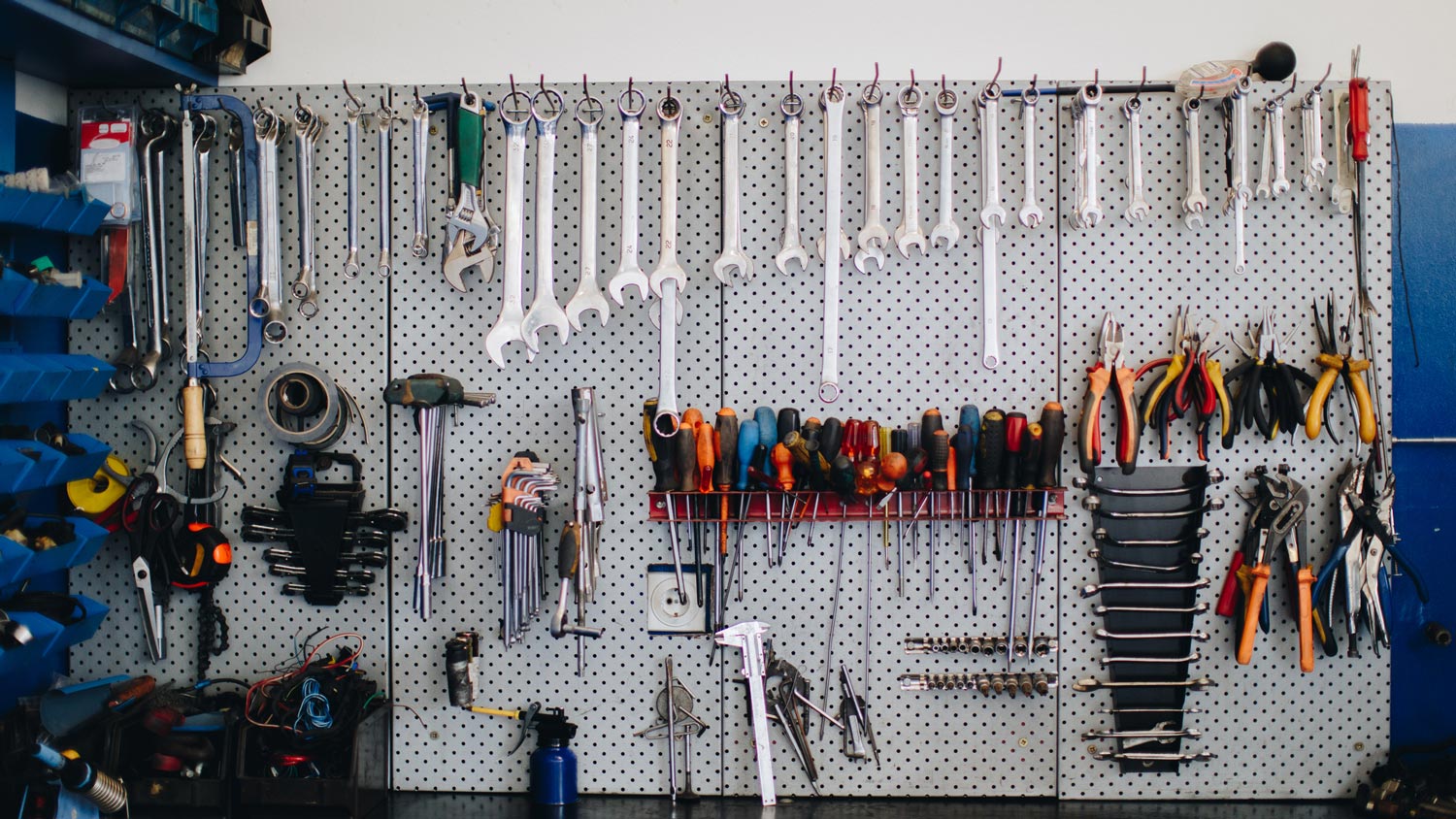
The cost to move a tiny house depends on its weight, distance, and what type of moving equipment is required. Our guide can help you budget for your move.
With some pre-planning and the will to let some stuff go, a packed garage is doable in less time than you think


The garage is often saved for last, but consider making it your first place to pack. Because it takes a lot of time to sort and box unwieldy items, it’s a great task to put behind you. After finishing, you’ll love having the newfound motivation to take on the rest of the house. These step-by-step tips will help you pack your garage in just days instead of weeks.
Start the garage packing process the easy way and give or throw away any items that can’t be transported safely or legally. If you’re using a local moving company, they’ll also have a list of items they won’t ship, so take a look sooner rather than later.
Talk with your local fire department or trash management company about the correct way to dispose of the following flammable and hazardous items:
Aerosol cans
Gas
Paint
Paint thinners
Charcoal
Propane tanks
Fertilizer
Pesticide
Cleaning supplies
Then, gather heavy-duty construction trash bags and recycle bins, and get to work sorting the clutter that you don’t want to move to your new garage, such as:
Broken toys, collectibles, and furniture
Unusable construction materials
Newspapers, magazines, and cardboard
Any items ruined by mildew or moisture
Refrigerated food items

The lighter the load, the better the move, so think hard about each item you intend to pack and if it could earn you some moving money. If it's a go, set it aside and move on to the next items. Now is the time to sell anything you don’t need, like the stroller used for your now 10-year-old, the growing collection of past-season sports jerseys, and unwanted tools.
Pick a charitable organization, like Habitat for Humanity ReStores, and donate any items you didn’t sell or want to go directly to benefit someone in need. Some non-profits provide online scheduling for free pick-up or you can call to find out the best days to drop off donations. Try contacting:
Salvation Army
Goodwill
The Arc
Pickup Please (Vietnam Veterans of America)
Local animal shelters
Pairing the right boxes and supplies with the correct packing methods is essential to the success of your move. Before loading the boxes, layer the securely taped bottoms with packing material to soften any accidental drops.
Many items in the garage are heavy and oddly shaped (looking at you, toboggan), so you might have to get creative with moving blankets and joining multiple boxes together. If you hired a moving company, they’ll have everything you need for large, hard-to-box items.
For a DIY move, have the following on hand to safely box up your items:
Boxes: Gather sturdy, recyclable cardboard moving boxes of various sizes.
Eco-bubble wrap: Use biodegradable eco-bubble wrap to protect items.
Moving blankets: To save money, try to borrow or buy these secondhand from online marketplaces.
Packing tape: Avoid disaster and secure every box’s top and bottom with packing tape for additional strength to prevent splitting. You’ll need approximately one roll of tape for every 15 to 20 boxes.
Packing paper: Ordinary newspaper works fine for some items, but do note, newspaper’s print runs, meaning you might have extra clean-up at your new home.

Even after the great garage purge, you’re probably still a little overwhelmed with the number of items to pack. But hang on. These tips will help you pack up the rest of your items efficiently and securely:
Leave small hand tools—such as screwdrivers, wrenches, pliers, or hammers—in your toolbox and securely lock.
Wrap any items with sharp blades with a few layers of eco-bubble or old towels and blankets. You may also want to label the box as an extra moving precaution.
Bundle large garden tools, like shovels and rakes, together with tape and wrap them with a large moving blanket or in wardrobe boxes.
You’ve kept the boxes for years, now it's time to pack power tools in their original container. Remove any detachable parts, including the batteries, and pack them in the same box.
Empty the fuel from gas-operated machinery, such as lawnmowers and chainsaws.
Stack outdoor chairs and disassemble other outdoor furniture when possible. Remove the cushions—clean and dry them first, then pack in boxes.
Cover clean plant containers in eco-bubble or box with packing material.
Clean, defrost, and dry refrigerators and freezers. Wrap them with moving blankets for protection.
If you prefer or need more packing space, disassemble bikes as much as possible, starting with the handlebars and wheels. If you can, ask a local bike store for an original bike box.
Remember that memory card game you played as a kid? It was always hard to find those two matching elephants in rows and rows of cards. Prepare for that brain game again if your unlabeled boxes get shuffled during the move.
For a successful move, label each box with a general description of the contents inside and the location where the box is going, whether it's the living room, kitchen, or bedroom. If you’ve asked people to help you move, this directs the flow of boxes without asking you where each one goes.
The average cost to hire movers for a local move (within a 100-mile radius) is $1,715, but it could range from $880 to $2,570 based on multiple factors. Distance is the most important factor. A long-distance move costs anywhere from $2,700 to $10,000, with an average cost of $3,500. The second most important detail is the weight and volume of items, which affects the size of the truckload and the length of time it takes to move.
There are a few more minor factors to consider, too, like the time of year you’re moving, the ease of access to your house or apartment, and if you purchase any add-on services like moving insurance or furniture disassembly. You can also hire professional packers to organize your belongings before moving day for around $1,000.
Moving by yourself is significantly cheaper than hiring a team of professionals, and the savings increase the farther away you move. The cheapest DIY option is to rent a moving truck, which costs an average of $240 per day. Another DIY idea is to rent and ship a moving container, which costs between $2,000 and $5,000.
However, several benefits to hiring a pro make it worthwhile if it’s within your budget. Professional local movers will do the job quickly and efficiently and save you hours of heavy lifting. With their experience and training, items are less likely to be damaged during the moving process, and you can pay for moving insurance to reimburse you should any damage occur. Many homeowners simply appreciate the peace of mind that comes with hiring professionals; they take a lot of stress off your plate on what is already a hectic day.
From average costs to expert advice, get all the answers you need to get your job done.

The cost to move a tiny house depends on its weight, distance, and what type of moving equipment is required. Our guide can help you budget for your move.

Planning and budgeting for an office move? Find out the average office moving costs, from moving office equipment to IT expenses.

The cost to rent a trailer depends on its size and type and how far you’re traveling with it. This guide compares trailer options and their prices.

Wondering what is a moving broker? Check out our guide to learn more about this moving pro and how their services compare to moving carriers.

Moving out of state? Use this checklist to prepare for a successful move.

Combining standalone art and photos in one design can be challenging. Follow these gallery wall tips to choose and arrange pieces for the perfect gallery wall.